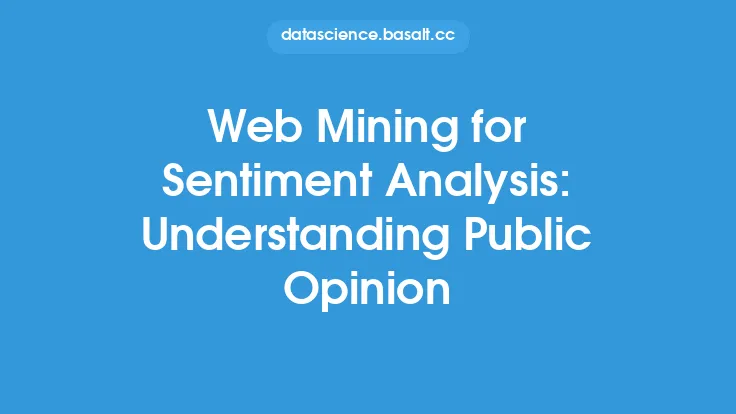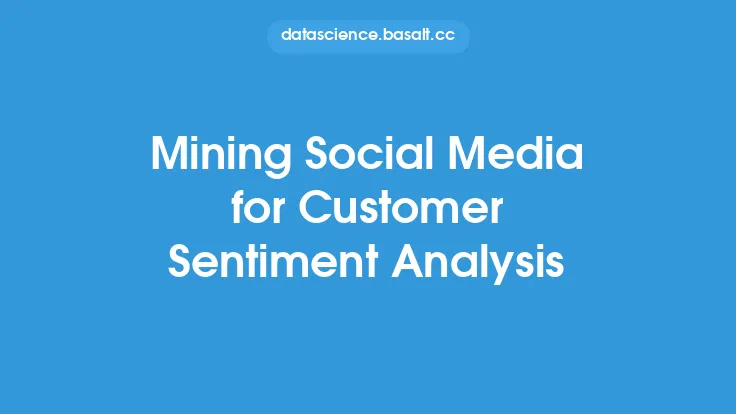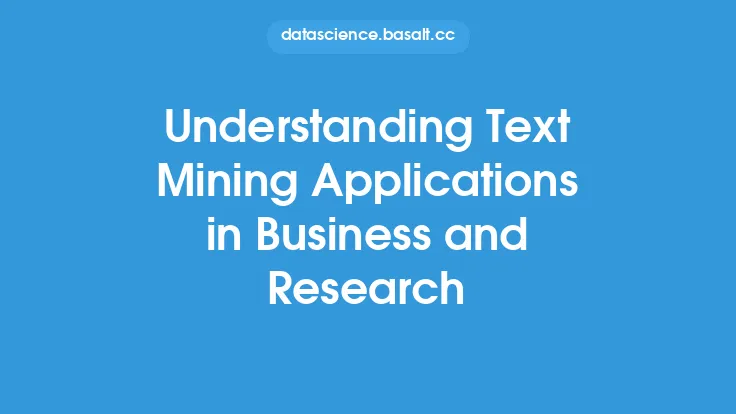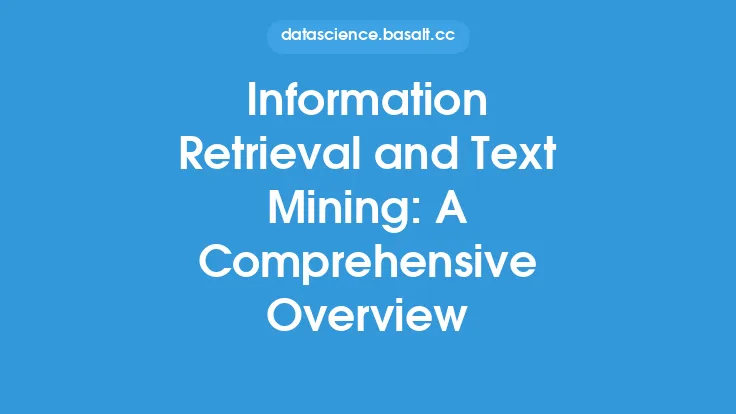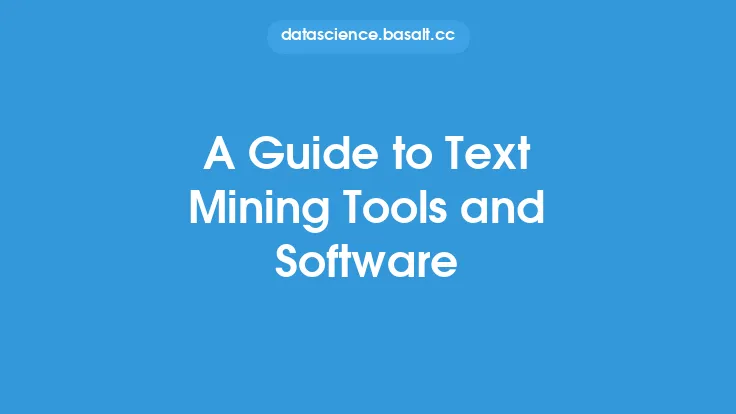The process of extracting insights and patterns from unstructured text data has become a crucial aspect of data analysis in various fields, including business, research, and social media. One of the key applications of text mining is sentiment analysis and opinion mining, which involves analyzing text data to determine the emotional tone, sentiment, and opinions expressed by individuals or groups. This process can be used to gain a deeper understanding of customer opinions, preferences, and behaviors, as well as to monitor and analyze public sentiment on various topics.
Introduction to Sentiment Analysis
Sentiment analysis is a type of text mining that involves analyzing text data to determine the emotional tone or sentiment expressed by the author. This can include determining whether the text is positive, negative, or neutral, as well as identifying the specific emotions expressed, such as happiness, sadness, or anger. Sentiment analysis can be used in a variety of applications, including customer feedback analysis, social media monitoring, and opinion mining. The goal of sentiment analysis is to provide insights into the opinions and emotions expressed by individuals or groups, which can be used to inform business decisions, improve customer service, and monitor public sentiment.
Techniques for Sentiment Analysis
There are several techniques that can be used for sentiment analysis, including rule-based approaches, machine learning approaches, and hybrid approaches. Rule-based approaches involve using predefined rules to identify sentiment-bearing phrases and determine the sentiment expressed. Machine learning approaches involve training a model on a labeled dataset to learn the patterns and relationships between words and sentiment. Hybrid approaches combine the strengths of both rule-based and machine learning approaches to improve the accuracy and effectiveness of sentiment analysis. Some common techniques used in sentiment analysis include:
- Tokenization: breaking down text into individual words or tokens
- Part-of-speech tagging: identifying the part of speech (such as noun, verb, or adjective) for each word
- Named entity recognition: identifying specific entities (such as people, places, or organizations) mentioned in the text
- Sentiment lexicons: using pre-defined lists of words with known sentiment to determine the sentiment expressed
Opinion Mining
Opinion mining is a type of text mining that involves analyzing text data to identify and extract opinions expressed by individuals or groups. Opinion mining can be used to gain a deeper understanding of customer opinions, preferences, and behaviors, as well as to monitor and analyze public sentiment on various topics. Opinion mining involves several steps, including:
- Opinion extraction: identifying and extracting opinions expressed in the text
- Opinion summarization: summarizing the opinions expressed in the text
- Opinion ranking: ranking the opinions expressed in the text based on their relevance, importance, or sentiment
- Opinion visualization: visualizing the opinions expressed in the text using charts, graphs, or other visualizations
Challenges and Limitations
Sentiment analysis and opinion mining can be challenging due to the complexity and nuance of human language. Some common challenges and limitations include:
- Ambiguity: words or phrases can have multiple meanings or interpretations
- Context: the meaning of words or phrases can depend on the context in which they are used
- Sarcasm and irony: sentiment analysis can struggle to detect sarcasm and irony, which can be misinterpreted as literal sentiment
- Language variability: language can vary across cultures, regions, and individuals, making it challenging to develop sentiment analysis models that are effective across different languages and dialects
Applications and Use Cases
Sentiment analysis and opinion mining have a wide range of applications and use cases, including:
- Customer feedback analysis: analyzing customer feedback to identify areas for improvement and measure customer satisfaction
- Social media monitoring: monitoring social media to track public sentiment and identify trends and patterns
- Opinion mining: extracting and summarizing opinions from text data to gain a deeper understanding of customer opinions and preferences
- Reputation management: monitoring and analyzing public sentiment to manage and protect a company's reputation
- Market research: analyzing text data to gain insights into customer opinions, preferences, and behaviors
Tools and Technologies
There are several tools and technologies available for sentiment analysis and opinion mining, including:
- Natural language processing (NLP) libraries: such as NLTK, spaCy, and Stanford CoreNLP
- Machine learning libraries: such as scikit-learn, TensorFlow, and PyTorch
- Text analysis software: such as SAS Text Miner, IBM SPSS Text Analytics, and Lexalytics
- Cloud-based services: such as Google Cloud Natural Language, Amazon Comprehend, and Microsoft Azure Text Analytics
Best Practices
To get the most out of sentiment analysis and opinion mining, it's essential to follow best practices, including:
- Data quality: ensuring that the text data is accurate, complete, and relevant
- Data preprocessing: preprocessing the text data to remove noise, handle missing values, and normalize the data
- Model selection: selecting the most appropriate model for the specific use case and dataset
- Model evaluation: evaluating the performance of the model using metrics such as accuracy, precision, and recall
- Interpretation: interpreting the results of the sentiment analysis and opinion mining to gain insights and inform business decisions.
